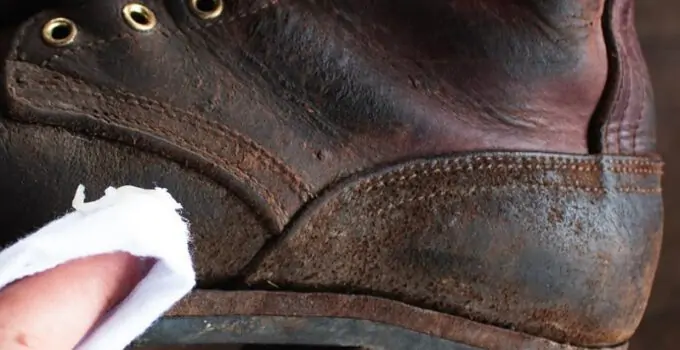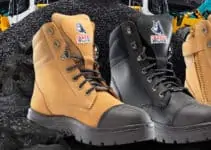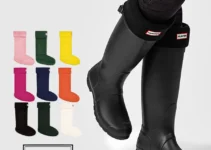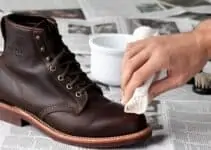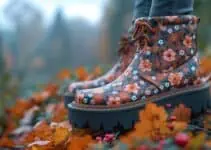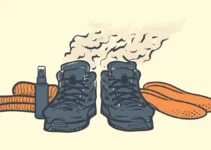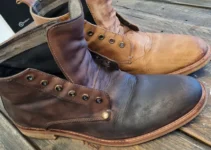Like any equipment, work boots are more comfortable and pleasant to wear if they are properly maintained. The other beneficial consequences are to guarantee their level of protection and to extend their life…
When we buy boots, we want them to last a long time and always look like new. However, this is not going to happen. What will happen is that you will take the best care of your boots so that they last as long as possible and always look their best.
For this reason, here are some basic but key tips on how to achieve this.

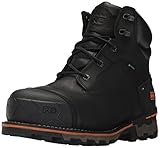






Keep the leather moisturized
The leather of the boot should be kept somewhere between totally dry and over-moisturized. On the one hand, if it does not have enough moisture, the leather will crack and split, and its flexibility will be affected. On the other hand, excessive humidity can deform it.
In this sense, consider investing in products to nourish the leather of your boots and maintain the proper moisture level and flexibility in your boots.
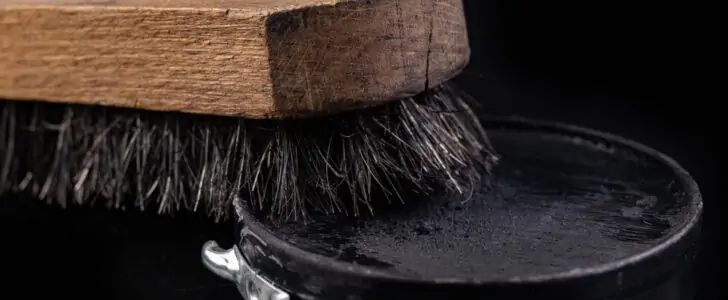
boot polish
There are many products worth trying, such as leather soaps, almond oil polishes or vision oil. Be careful though, some products can affect the color of your boots, especially light-colored ones.
Amazon deals
Work shoes do not like humidity
Depending on the job, shoes are sometimes very exposed to mud and damp atmospheres. When it comes to shoe care, the first thing to do is to dry them when you get home, away from any direct heat source (fireplace, radiator).
The room temperature of the living room is ideal.
Depending on their material, the drying time will be more or less long.
Knowing that you must avoid at all costs putting on shoes that are still wet, which would encourage the development of bacteria and pathologies on the foot, the ideal solution for the worker would be to have a second pair. In this way, the worker can use one or the other alternatively, being sure to have dry and healthy shoes.
A soft and regular shoe maintenance
Whether on a construction site, in an industrial workshop or in a storage warehouse, working environments are often harsh on personal equipment. Dust, particles, paint, product splashes, puddles… feet are rarely spared.
At the end of the day, shoes have played their protective role, but they too need to be cleaned of accumulated dirt. Over time, these impurities can deteriorate the components of the upper or alter the effectiveness of the outsole.
3 good daily reflexes:
- When removing them, the worker should already check that no pebbles or rigid pieces remain stuck in the outsole, which could reduce the anti-slip functionality.
- Then, it is best to systematically wipe the shoes with a soft brush to prevent surface dirt from accumulating and damaging the upper and/or the outsole.
- Finally, do not forget to dry them as mentioned above. Even if they have not been wet on the outside, shoes are often wet on the inside, as the foot is an area that sweats a lot.
These simple gestures must be completed by a more advanced regular maintenance, specific according to the material of the shoes.
Smooth or grained leather work boots:
Without regular nourishing products, the leather will crack, with a risk of serious discomfort.
It is best to first use a cloth soaked in water to clean the leather and then apply a fairly greasy cream from time to time to nourish the leather and keep it supple.
Work boots in nubuck leather and velvet crust:
Soapy water is also recommended to clean this particularly fragile surface.
You can also use a soft brush on a regular basis to avoid the accumulation of dust and dirt from everyday life. Finally, a passage with very fine sandpaper allows removing the main stains.
Canvas or synthetic fiber shoes:
They very well support the washing with water and soap with a brush, always provided to make them dry well. Depending on the size of the mesh, the fabric can be more or less complicated to clean
Microfiber shoes:
Depending on how it looks (smooth, nubuck, suede, etc.), the maintenance will be identical to that of leather, except that no grease/cream should be added to nourish. This does nothing for microfiber, which is not a “living” material like leather.
How to care for the inside of your shoes
Locked up all day long in your work shoes, your feet tend to sweat, which can lead to bacteria and bad odors.
The best is to spray a deodorant spray inside. Designed to limit odor emissions, it often contains antibacterial and anti-fungicide products to ensure the perfect hygiene of the shoe.
In a safety shoe, it is the only interface between the anti-perforation sole and the foot. It, therefore, contributes to the comfort but also to hygiene.
The insole should be considered as a sock, so do not hesitate to clean it regularly. The ideal would be also to take it out of the shoe every evening after use. Having a spare pair of removable insoles and alternating is a good solution.
The external maintenance of the shoes goes together with good body hygiene and good internal maintenance. This means changing socks every day, washing your feet and watching for the appearance of worrying signs. We think of horns, mycoses, warts… And especially think of treating in case of too abundant perspiration.
This way, we avoid maceration factors that bring discomfort and reduce the life of the shoes, as the acidity of the perspiration favors the abrasion of the linings.

